Excerpts from Jim Conrad's
Naturalist Newsletter
Entry issued on November 22, 2019, from the forest just west of Tepakán; elev. ~9m (~30 ft), N21.053°, W89.052°; north-central Yucatán state, MÉXICO
THELEPHORA cf. PSEUDOVERSATILIS
About a month ago, after heavy rains toward the end of our rainy season when the ground was soggy wet, the curious, white-topped items shown below appeared on a trail I trod daily, passing through the woods:
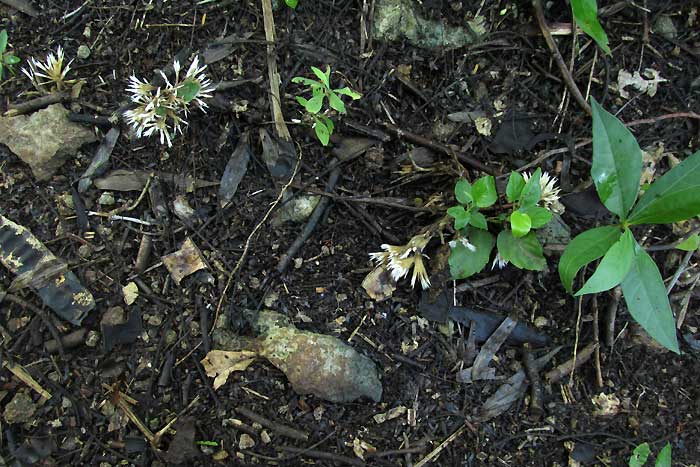
Below, a close-up of one of the tufts shows the white items arising at the margin of a green leaf of Elytraria imbricata.
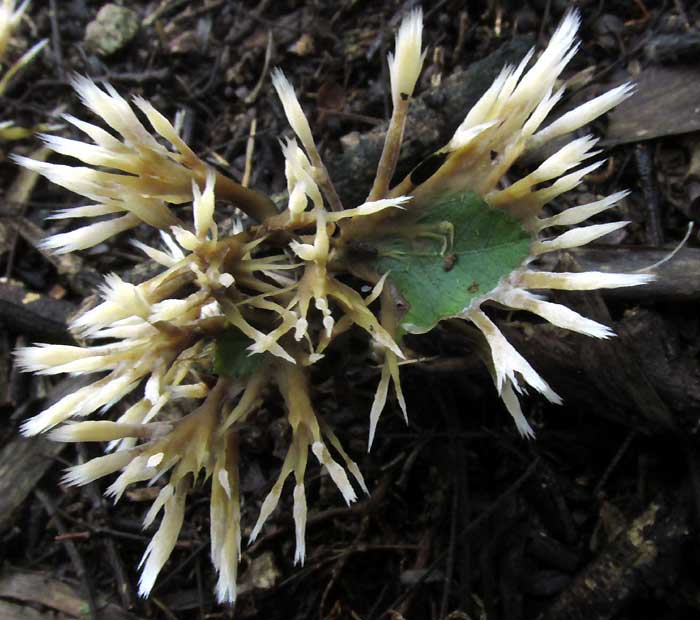
I assumed that the white items were fungal fruiting bodies, so if they're on a flowering plant's green leaves, they must be parasitizing the plant. However, the leaf seemed to not be suffering, and it's the same now a month later. Flipping over the leaf, I found the leaf's entire lower surface covered with what appeared to be a fungal sheet, shown below:
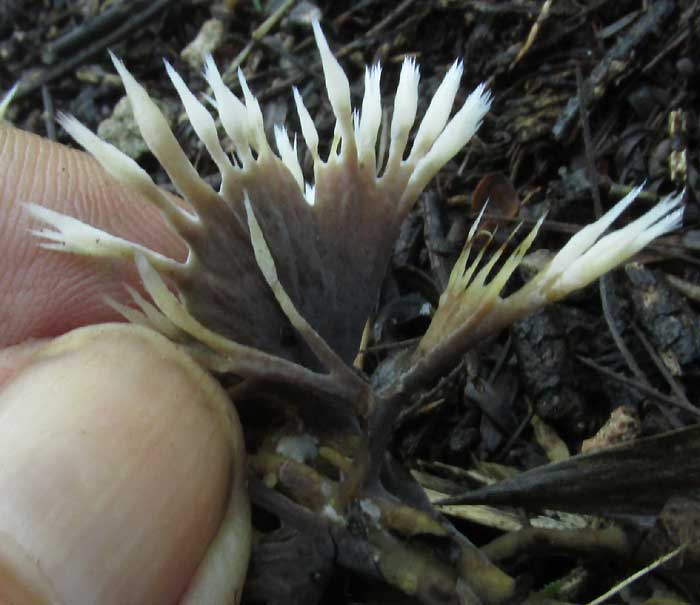
Other tufts of white items arose from stems, as shown below:

The organism occurred on other herbaceous species as well. The image below shows it on a grass, our bamboo-like Lasiacis divaricata:

And the picture below shows it arising from a partially decayed root or woody stem lying just below the soil's surface:
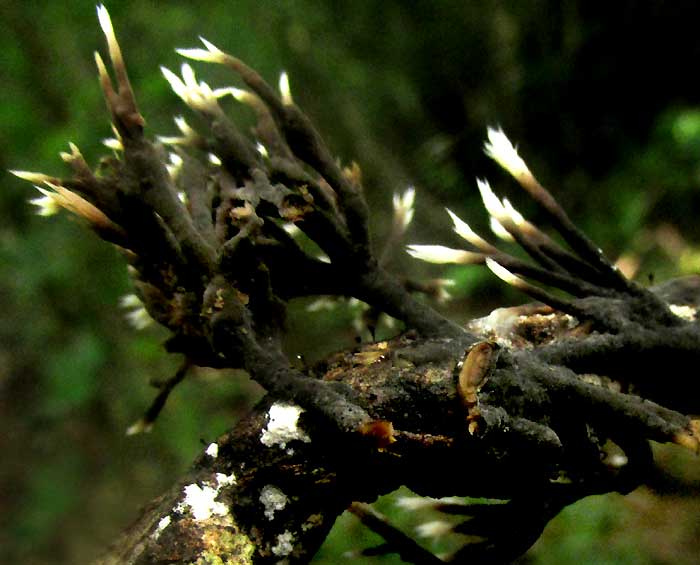
In that picture you can see that the organism's dark stems branch something like those in the fungus genus Ramaria, in the family Gomphaceae. However, the branch tips of Ramaria species I know terminate in blunt, clublike heads, while here the white branch tips are jagged and sharp-pointed, better shown below:
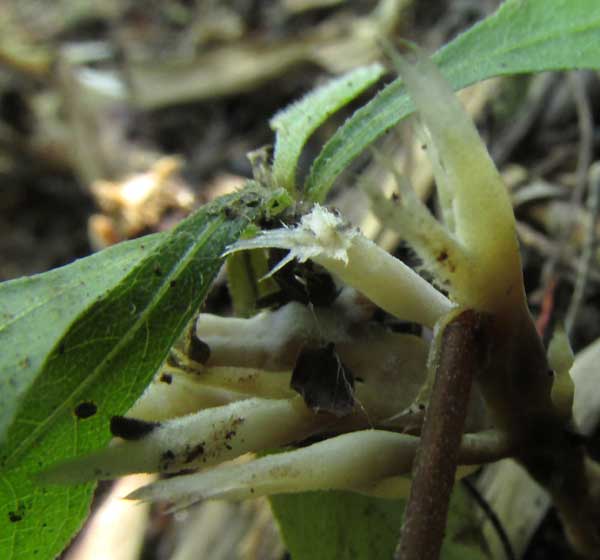
After trying to identify the fungus for over four years, finally a mycologist friend of a friend at the University of Bayreuth, Bavaria, Germany recognized it a member of the genus Thelephora, and similar to the species penicillata, but something else. Thelephora species belong to the fungus class Agariocomycetes to which most mushroom-forming species belong.
Thelephora penicillata has been most extensively documented in Europe and eastern North America, not much in Mexico, though fungi identified by that name have turned up here and there across the world. At the GBIF website, a search for Thelephora species documented from the Yucatan, Cuba and surrounding area indicated that unconfirmed Thelephora pseudoversatilis had documented for Cuba. That species looked more like our Yucatan fungus.
The 2014 study by Itzel Ramírez-López and others entitled "Thelephora versatilis and Thelephora pseudoversatilis: two new cryptic species with polymorphic basidiomes inhabiting tropical deciduous and sub-perennial forests of the Mexican Pacific coast," describes two species occurring in Mexico. From the illustrations, our Yucatan fungi could be either one. Cuba's unconfirmed Thelephora pseudoversatilis occurred in the subtropical broadleaf forest biome, just across the Yucatan Channel from the Yucatan. T. versatilis has been documented in southern Florida and along Mexico's Pacific coast. Both species are described as "...developing over physical barriers like herbaceous plants, litter or rock fragments," which our fungus does.
Other details distinguishing the two species are to be seen only with high magnification.
The above pictures are being filed under the name THELEPHORA cf. PSEUDOVERSATILIS because that seems to be the species documented as occurring closest to here, it occurs in the same biome in which the Cuban fungi were documented, and that species looks like our fungus. The "cf." means "I'm not sure about this, but my best bet is that it's this species."
The study by Ramírez-López and others refers to both of these taxa as cryptic species. In general, cryptic species are those who appear extremely similar or identical, but their genetic makeup differs considerably.
That study also describes Thelephora species as engaged in "ectomycorhizal symbiosis." Ectomycorrhizas are defined as "dual organs formed between the terminal feeder roots of many plant species and certain soil fungi." In other words, our fungus surely is helping a rooted plant survive, as the rooted plant helps our fungus.